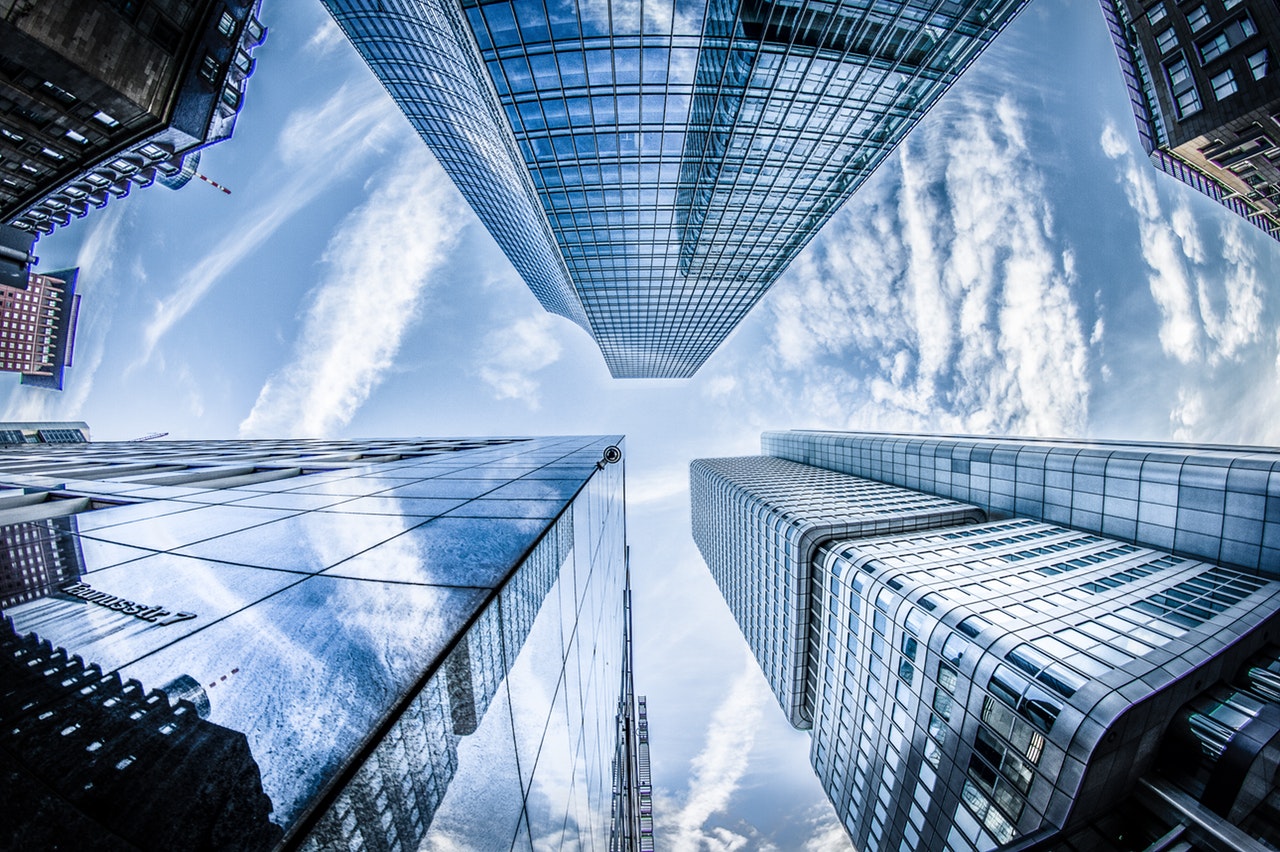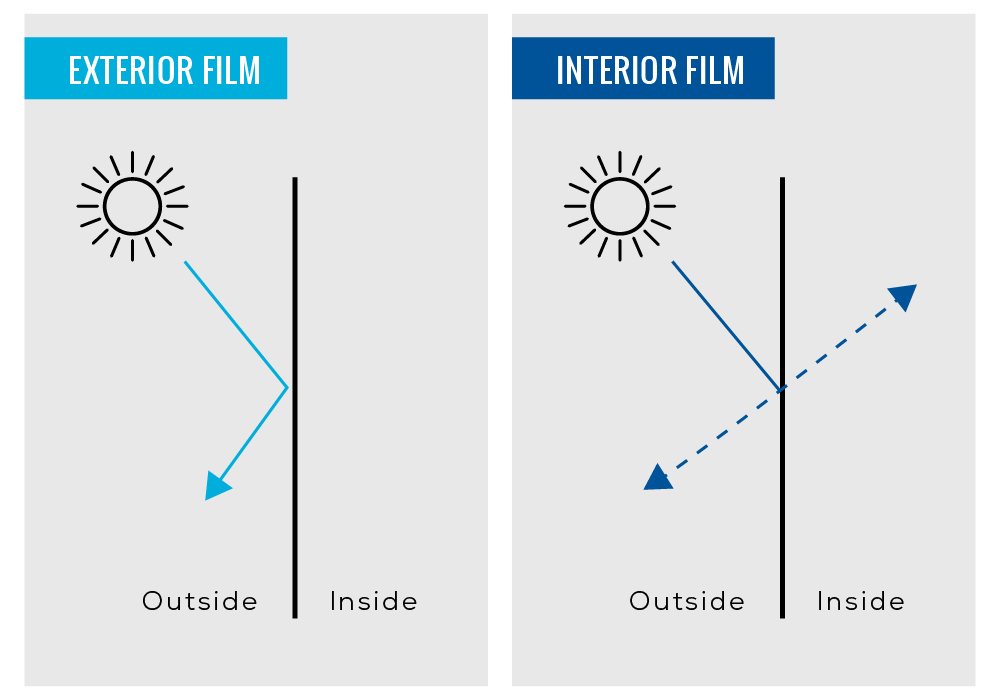
Have you been lying awake each night worrying about whether you should apply your building’s commercial window tinting on the exterior or the interior of your windows? If you’re like most commercial building managers, the answer to this is a resounding “yes!”… or maybe that’s simply what we window film experts worry about at night. (You worry about this too, right? Please tell us it’s not just us!)
Either way, this most recent article from the commercial building window tinting experts at NGS will help you figure out the truth about your best tinting scenario, so you can finally decide whether you should apply your film on the exterior or the interior of your building’s windows.
Let’s get straight to it.
1. Exterior Applications Offer More Heat Rejection Than Interior Applications
Okay, quick physics lesson here. There are two main types of window film: reflective and tinted. Reflective reflects sunlight and heat; tinted absorbs and redistributes sunlight and heat.
Reflective films are great at blocking heat and light at the lowest cost, but they often contain metal (not great in our WiFi- and cellular signal-filled world), and their nighttime reflectiveness can disrupt your views from inside your building. Tinted films used to be dark so they could absorb more light, but new technological advancements mean that you can now get non-metallized, 5G-friendly “tinted” films that are crystal clear with gorgeous views in the day- or night time.
Now that you understand how the absorption factor works with commercial building window “tinting,” it should be easy to understand why exterior films often outperform interior films.
Think about it: since your interior-applied film has to draw light and heat through your building’s glass before redistributing most of it back outside (because the film is on the inside of the glass), that means your film is allowing light and heat into your window glass for at least a little bit of time.
However, if your exterior window film absorbs the light and heat and redistributes it out before the light and heat have penetrated your glass… well, clearly, that makes for better heat rejection.
They say a picture is worth a thousand words, so let’s use a graphic to sum up our physics lesson today:

Perfectly clear now, right? However, it’s smart to remember that there are a lot of benefits to interior-applied films too.
2. Exterior Applications Are More Flexible and Less Disruptive Than Interior Applications
You know what’s time-consuming and disruptive? A laborious glass film installation process. If you have strange interior surfaces like atriums, skylights, or conservatory roofs, it’ll take longer to perform an interior commercial window tinting installation than if you decided to install that film on the exterior instead.
Plus, an exterior application of window tinting in office buildings can be less disruptive for tenants, and exterior applications can also be handy if various areas of your building require security clearance or third-party privacy certifications (e.g. HIPAA) for contractors to gain access to.
3. Exterior Applications Can Help You Keep Your Windows Cleaner Than Interior Applications
No one ever sees this one coming, but it’s true! Exterior film applications often contain a hydrophobic coating that helps protect them from the elements, and that hydrophobic coating can help repel dirty, streaky water marks from your windows.
For exterior applications of crystal-clear commercial building window tinting solutions like the 3M Prestige Series, this means you’ll be able enjoy your building’s jaw-dropping views more clearly, 24/7, in every season.
Which Application Is Best for You?
Of course, simply knowing how exterior-applied commercial office window tinting can outperform interior applications won’t answer all your questions. You may still find yourself lying awake at night wondering which application is best for me?! (Please, don’t tell us it’s just us with these nighttime worries!)
If deciding on a window film application method were a no-brainer for your business, you wouldn’t still be reading this blog – you’d already have made the choice to hire the national window tint experts at NGS long ago, which means you’d already have your perfect film by now.
So, what’s the right answer? Well… that depends.
To help you, we’ve put together a short answer and a long answer. (Or, rather, we have two short answers, but one has a slightly longer follow-up process.)
The short answer is that exterior film is probably a better choice for you if you have tricky interior installation areas, super busy or government tenants (or round-the-clock mission critical operations), and/or you have an interest in reducing your heat gain more than an interior film can.
The longer answer (or follow up) is that both exterior and interior film applications may suit your needs for different areas of your building, because both application methods have their own benefits. To get a more complete answer on this, you may want to set up a consultation with NGS, the undisputed experts and #1 Commercial Window Film Company in the U.S.
Ready to learn more about the various types of window films? NGS has got you covered.


